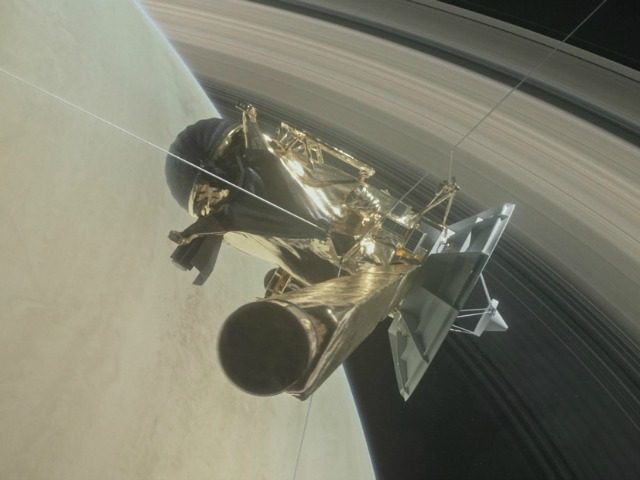After nearly two decades, NASA’s Cassini spacecraft completed its mission to study Saturn and its moons on the morning of September 15, 2017.
At 7:55:46 AM Eastern, Cassini transmitted its final message to NASA. About 45 seconds later, the spacecraft was transformed into fiery debris as it plummeted through Saturn’s hydrogen and helium-rich atmosphere. Launched in 1997, Friday saw the end of the craft’s 13 years spent orbiting Saturn and its moons, making discoveries that surprised even the NASA scientists involved.
The craft’s mission was extended twice after reaching the gas giant, and NASA decided to intentionally crash the probe into Saturn as it ran out of fuel to send back data about the planet’s upper atmosphere.
Once the signal was lost, Cassini Program Manager Earl Maize had this to say to his team at mission control in NASA’s Jet Propulsion Laboratory:
I hope you’re all … deeply proud of this amazing accomplishment. Congratulations to you all. This has been an incredible mission, an incredible spacecraft, and you’re all an incredible team. I’m going to call this the end of mission.
JPL research scientist Morgan Cable called Cassini’s epitaph “a historic moment,” the “celebration of an amazing mission and incredible legacy.”
That is, if anything, an understatement. Cassini will live on through its many remarkable discoveries, among them: the existence of multiple moons that may very well be hospitable to life; massive geysers of liquid water on Enceladus; a hexagonal jet stream; and the constant evolution of Saturn’s iconic rings.
The public has responded to Cassini’s bittersweet farewell with an outpouring of enthusiastic gratitude for its exploration and those involved. Maize said that he is “feeling the love, if I may be so corny. It’s just very heartening. Because it’s part of what we try to do — to extend everybody out to Saturn. It’s not [just for] scientists in the ivory tower; it’s for humanity. And so for everybody to get on the ride … it is just phenomenal.”
JPL Director Mike Watkins said:
One of the greatest legacies of the mission is not just the scientific discoveries it makes, and what you learn about, but the fact that you make discoveries that are so compelling that you have to go back. We will go back and fly through the geysers of Enceladus, we will go back and look at Titan, because the Cassini findings are just groundbreaking.
Follow Nate Church @Get2Church on Twitter for the latest news in gaming and technology, and snarky opinions on both.

COMMENTS
Please let us know if you're having issues with commenting.